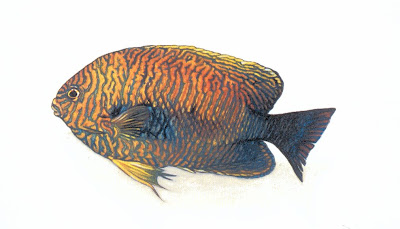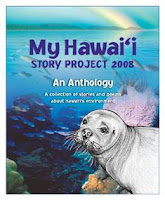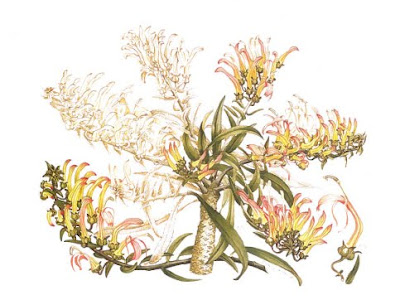See below for grants for teachers, filmmakers, and photographers, as well as competitions and awards for students. Do you know of any grant opportunities we should know about? Feel free to leave a comment!
"Living on the Ocean Planet" Video Contest - Submission deadline January 25, 2010. The National Ocean Sciences Bowl (NOSB) "Living on the Ocean Planet" Video Contest seeks to highlight the important role technology plays in ocean research. Any student enrolled in a high school in the United States is eligible to submit a video. Students are encouraged to work in teams. The top prize is an invitation to the 2010 NOSB Finals Competition at the University of South Florida in St. Petersburg, Fla. on April 23-25. Learn more.
___________________________________________________________
DuPont Challenge© Science Essay Competition gets students writing about science! Students in seventh through12th grade research and write a 700 to 1,000-word essay about a scientific discovery, theory, event or technological application that has captured their interest. Created to honor the Challenger astronauts, students can win savings bonds up to $5,000, and a trip to Walt Disney World and to the Kennedy Space Center. Teachers win too! Along with the trips with their students, teachers can also win $500 grants. Students have the opportunity to be inspired, to be creative, and to tell a story in this essay about any scientific topic. Teachers can use this competition to motivate students to reach beyond themselves and push the limits! To learn more about the competition, check out the website at
http://thechallenge.dupont.com. Entries will be accepted from December 1, 2009 until
January 31, 2010.
Toshiba/NSTA ExploraVision Awards Program
ExploraVision is a competition that makes science fun and exciting for students and gives educators an innovative way to present science topics in the classroom. This competition encourages K-12 students of any interest and ability levels to imagine a future technology using present day predicaments. Students can win up to $10,000 in savings bonds for college and cool gifts from Toshiba. Applications are now being accepted; the deadline is
February 2, 2010. For more information about the program or to learn how to apply, visit
www.exploravision.org.
Action for Nature Eco-Hero awards: To recognize the outstanding accomplishments of environmentally minded young people, Action for Nature will present cash prizes of up to $500 to young Eco-Heroes for their environmental successes. Applicants ages 16 or under are eligible to apply. Winners will receive both a cash prize up to $500, and public recognition through Action for Nature’s public relations department. Application deadline is February 28, 2010. www.actionfornature.org/eco-hero/ecoheroawards.html
K-8 students have the opportunity to become “Agents of Change” as they team up with their classmates to create replicable solutions to environmental issues in their classroom, school and community. Student and teacher/mentor prizes, which vary according to grade level, include savings bonds, school grants, exciting trips, TV appearances and much more. Applications are now being accepted. The deadline for elementary level entries is January 31, 2010 (finalists and winners to be announced March 10, 2010); and the deadline for middle school entries is
March 15, 2010 (state winners to be announced April 26, 2010, and national winners to be announced May 10, 2010). For more information about the Challenge or to register for the competition, visit
www.wecanchange.com.
Disney Planet Challenge will fund hands-on classroom projects that benefit the environment. To be eligible, teachers must first register to participate in the
Disney Planet Challenge, then submit a hands-on project request focusing on the environment at
DonorsChoose.org. Full-time fourth, fifth and sixth grade teachers at public schools are eligible.
Lowe's Toolbox for Education Grants
Searching for funding for your outdoor classroom, schoolyard garden, or school greening project? Lowe's will donate $5 million to public schools and public school parent teacher groups at more than 1,000 different public schools per school year.
Nickelodeon's Big Green Grants Program provides resources to schools and community-based organizations to support environmentally friendly projects that educate and inspire kids to take care of the environment, be active, live healthily, and engage in community service. Each Green Grant will provide up to $5,000. Applications are accepted and reviewed on a rolling basis throughout the year.
NOAA's Office of Education requests applications for environmental literacy projects in K-12 education. Funded projects will be 1-5 years in duration and will promote changes in K-12 education to expand the amount of Earth System Science taught in the classroom.
The Presidential Award for Excellence in Mathematics and Science Teaching (PAEMST) is the highest recognition that a kindergarten through 12th-grade mathematics or science teacher may receive for outstanding teaching in the United States. Winners receive a paid trip to Washington, D.C., and a $10,000 award from the National Science Foundation.
_______________________________________________________________________
Explore Funding Opportunities
Teaching about the environment does not always require funding, but if you have a creative idea that needs funding, or want to allow an opportunity to enrich your skills, browse funding resources by using the link above.
__________________________________________________________________
Do Something Grants: Did you recently create a sustainable community action project, program or organization? Would $500 help further the growth and success of your program? If you answered, "YES!" you are eligible to apply for a Plum Youth Grant. Plum grants are awarded weekly on a rolling basis. Applications can be submitted every two months. www.dosomething.org/grants
Apprentice Ecologist Initiative Grant: The Apprentice Ecologist Initiative has engaged many young people to participate in environmental conservation and cleanup projects over the past decade. It is a two-part award. First, teens lead a project, such as a clean-up of a natural area or a tree-planting project. Then photos of the experience are uploaded to the Nicodemus Wilderness Project Web site. The final component of the competition is to submit an essay about the project experience. A $500 educational scholarship, as well as several runner-up prizes, are awarded annually to the author of the top Apprentice Ecologist essay. www.wildernessproject.org/volunteer_apprentice_ecologist.php
President’s Environmental Youth Awards: Since 1971, the Environmental Protection Agency (EPA) has annually sponsored the President’s Environmental Youth Awards. The awards program recognizes forward-thinking youth with outstanding ideas about the environment and how to sustain it. All applicants receive a signed certificate by the President honoring them for their efforts. Regional winners receive a presidential plaque as well as an invitation to an EPA-sponsored ceremony in Washington, D.C. The competition is open to K-12 youth in all 50 states and the U.S. territories with an adult sponsor. www.epa.gov/PEYA/
Pete Conrad Spirit of Innovation Awards: Do you think you have an idea that could impact the field of renewable energy? The Pete Conrad Spirit of Innovation Awards challenges teams of high school students to create innovative products for use in various fields of science and technology, including lunar exploration, personal spaceflight and renewable energy. Teams vie for more than $100,000 in cash prizes and the opportunity to commercialize their products for general market use. www.conradawards.org/rules.htm
Canon Envirothon Competition: The Canon Envirothon – North America’s largest high school environmental competition – is an annual youth environmental competition taking place over five days during the summer (August 1-7, 2010). Teams must demonstrate their knowledge of environmental science and natural resource management at five training/testing stations. www.envirothon.org
Volvo Adventure and United Nations Environment Program Competition: Volvo Adventure, in partnership with the United Nations Environment Program, recognizes and rewards students’ environmental activities. Finalists receive a trip to Sweden for the final judging and awards ceremony. Three prizes are awarded, including a grand prize of $10,000. To enter the competition students, must form a team of two to five members between 13 and 16 years of age plus one adult team leader. Teams plan and perform an environmental project and submit the finished project for judging. Submission deadline is January 31, 2011. www.volvoadventure.org/home.aspx
The above competition information comes from Planet-Connect.org. High School students interested in keeping up with conservation news, including contests, awards, and scholarship info can check it out here.
___________________________________________________________________
Are you a film maker interested in conservation issues? This grant may be for you: The Hawaii Community Foundation presents: The Pikake Fund; a grant given for film and video projects about environmental protection.
The Pikake Fund provides support for film or video projects about environmental protection efforts. It is a small fund that only makes grants in even years, (i.e., 2008, 2010 etc.) Usually, no more than $18,000 is available for grant-making in any of these years. There are no set deadlines, and inquiries may be made or proposals submitted after January 31st of any grant-making year (i.e., 2006, 2008, 2010). This year's grant cycle begins January 31, 2010.
The Fund is interested in supporting film or video projects that describe:
• conservation work that positively impacts the health of terrestrial or nearshore marine ecosystems,
• community-led projects or programs that demonstrate broad community involvement in the stewardship of natural resources, AND
• projects that integrate natural resource protection with Hawaiian cultural practices and traditions.
If you are interested in finding out more, or applying for this grant for the 2010 grant cycle, visit the Hawaii Community Foundation grant info page.





















